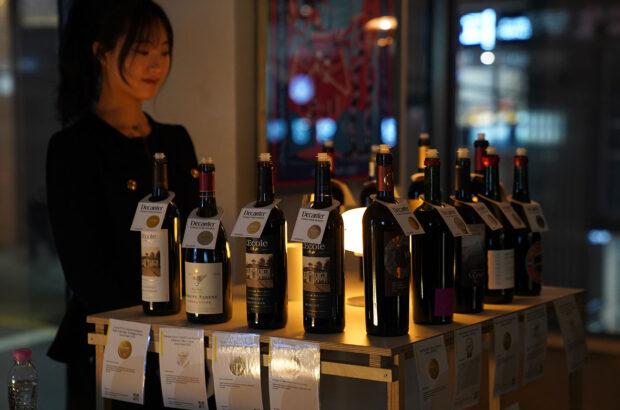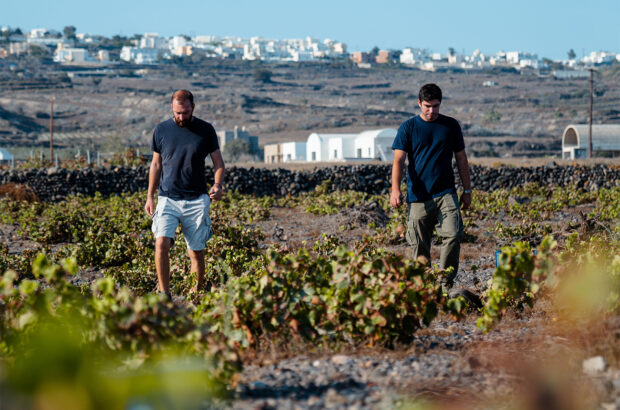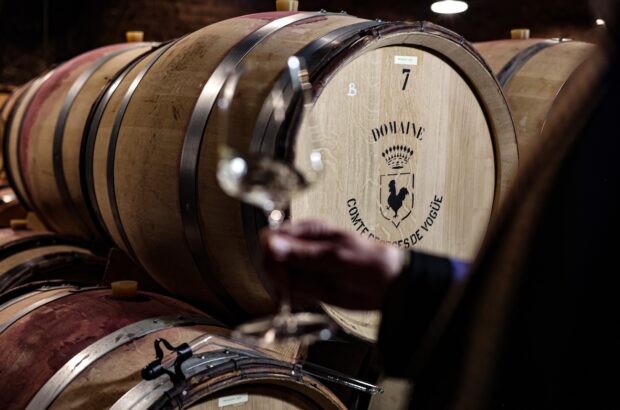We explain the differences between the Left Bank and Right Bank regions of Bordeaux, primarily focusing on their geographical location, appellations, dominant grape varieties, soil types and wine characteristics.
The Left and Right Banks are separated by the Gironde Estuary and the Dordogne and Garonne rivers. The Left Bank is known for Cabernet Sauvignon-dominant blends, gravelly soils and tannic, structured wines. Key appellations include Pauillac and Margaux.
The Right Bank is known for Merlot-dominant blends, clay and limestone soils and softer, fruitier wines. Key appellations include Pomerol and St-Émilion.
We also explore wine classifications such as the 1855 Classification of the Médoc and the St-Émilion Classification, as well as the impact of vintages and new grape varieties on the regions.
Situated on the west coast of France, Bordeaux is split in two by the Gironde Estuary, which divides into the Dordogne and Garonne rivers. When looking at a map of the region, the area to the north and right of the Gironde is the Right Bank and the areas below and to the left constitute the Left Bank.
More specifically, the Right Bank is the area to the north of the Dordogne river and the Left Bank is the area directly south of the Garonne River, both of which feed into the Gironde estuary that meets the Atlantic Ocean.
The joining of these three forms a shape like an upside down ‘Y’ with the two banks on either side and the area in between known as the ‘Entre-deux-Mers’.

Left vs Right Bank Bordeaux: Appellations
The Left Bank encompasses the Médoc wine region north of Bordeaux. Its four best-known appellations – from north to south – are St-Estèphe, Pauillac, St-Julien and Margaux.
It also encompasses the Haut-Médoc, Listrac-Médoc and Moulis-en-Médoc appellations. South of Bordeaux, the Left Bank includes Pessac-Léognan and Graves, plus the (largely) sweet wine producing appellations of Sauternes and Barsac.
The Right Bank’s most famous appellations are Pomerol and St-Émilion, the latter of which has four ‘satellite’ appellations. These are Montagne-, Lussac-, Puisseguin- and St-Georges St-Émilion.
However, the Right Bank also encompasses the: Côtes de Blaye, Côtes de Bourg, Fronsac, Canon-Fronsac, Lalande-de-Pomerol, Francs Côtes de Bordeaux and Castillon Côtes de Bordeaux.
River dissections aside, there are several important distinctions between the banks, most notably the dominance of specific red grape varieties.
Left Bank Cabernet
While all of the Left Bank wines are usually blends, Cabernet Sauvignon is the dominant force here. Merlot, Petit Verdot, Malbec and Cabernet Franc tend to play supporting roles.
As ever in the wine world, there are exceptions. Despite the prevailing narrative, there are many parts of the Médoc where Merlot is a dominant, if not the dominant component in blends. Château Clarke in Listrac-Médoc, for example, considers its soils more suited to Merlot in general. Its 2018 grand vin is 70% Merlot and 30% Cabernet Sauvignon.
The terroir of the Left Bank is mostly flat with gentle undulations in the landscape. Soils are largely composed of alluvial gravels with limestone underneath. That said, the composition can vary substantially from one vineyard to the next and there are large clay deposits in some appellations.
Wines typically have more tannin and a bigger overall structure than their Right Bank counterparts. Pauillac, in particular, has a reputation for producing powerful, muscular wines.
This has been particularly evident in several recent vintages such as the 2021 and 2023, where low volumes and/or poor quality Merlot crops has led to some wines being made with record high proportions of Cabernet Sauvignon.
Experience the elegance of Pessac-Léognan – join the Château Smith Haut Lafitte Masterclass at Decanter Fine Wine Encounter London 2025
Book your place
Right Bank Merlot
Right Bank wines are predominantly Merlot-based, with Cabernet Franc, Cabernet Sauvignon, Malbec and Petit Verdot used as blending components.
Some estates have sought to increase their use of Cabernet Franc in recent years, for its ability to deliver freshness in the glass.
For example, the proportion of Cabernet Franc in Cheval Blanc’s grand vin has been creeping up in recent vintages, now comprising around 46% of the final blend.
The most famous terroir is the large limestone plateau that surrounds the pretty town of St-Émilion itself. This is where the majority of the appellation’s great domaines can be found. The slopes of the plateau and lower-lying areas are dominated by clay soils.
In nearby Pomerol, on the outskirts of the riverside entrepôt of Libourne, there is no limestone. However, the composition of the soils is much more like that of the Left Bank with alluvial gravels and sand, albeit with much more clay mixed in. Many of the best châteaux border St-Émilion.
The Right Bank is also notable for smaller vineyard plots than on the Left Bank, most notably in Pomerol. There, estates manage an average holding of five hectares in size, while some Left Bank estates are more than 100ha.
The wines tend to be rich in fruit, softer in mouthfeel with less tannin and acid than wines from the Left Bank. As ever, however, generalisations rarely hold much water when it comes to wine.
And while there are plenty of wines that are also enjoyable when young, the best wines from the Right Bank are more than capable of ageing happily for many decades.

Vendangeurs with Merlot grapes at harvest at Petrus in Pomerol. Credit: Tim Graham / Getty Images.
New varieties
In early 2021, France’s national appellation body, INAO approved the use of six new grape varieties in Bordeaux, as part of efforts to combat climate change.
However, not all appellations are able to use them, and they will most likely be used in AOC Bordeaux and Bordeaux Supérieur, Entre-deux-Mers and the Côtes de Bordeaux wines.
Left vs Right bank Bordeaux: Vintages
Top Left and Right Bank Bordeaux châteaux can produce extremely long-lived wines, particularly in the right vintage conditions.
You may sometimes hear critics speak of a ‘Right Bank’ or ‘Left Bank’ vintage, depending upon whether conditions have favoured later-ripening Cabernet Sauvignon or Merlot, which tends to ripen earlier.
However, the situation is often more complex, and can depend upon many variables, from soil types to cellar management. Plus, weather does not always neatly divide itself between the two banks.
Both vineyard and cellar management techniques have evolved hugely in the last two decades, leaving estates vastly better-equipped to deal with difficult years than they were before.
In a rather mixed metaphor, technology has both levelled the playing field across appellations and starkened the contrast between estates at all levels.
The greater the means of an individual château the more it will be able to grow, pick, sort and choose only the very best quality fruit in a given vintage.
As a result, the very best estates are increasingly able to transcend especially hot or wet vintage conditions.
The refrain from critics in more recent years, therefore, is to treat each château on an individual basis rather than rely on ideas of one region or appellation being superior to another.
1855 Classification

Château Lafite-Rothschild
With close to 125,000 hectares of vineyards and as many as 60 separate appellations, Bordeaux is one of the most highly classified wine regions in the region.
The most famous of them all is the official 1855 Classification of the Médoc.
It’s a five-tier hierarchy, led by the five ‘first growths’ of Château Lafite Rothschild, Château Latour, Château Margaux, Château Haut-Brion and Château Mouton Rothschild.
Haut-Brion was included in the original 1855 list, drawn up for Emperor Napoleon III, even though it sits in Graves. Mouton was promoted to the top tier in 1973.
There are then second, third, fourth and fifth growth estates. The ever-improving quality of winemaking in Bordeaux has left some questioning how relevant this classification system really is.
Over the decades, it has often noted that while some classed growth estates have improved dramatically, others have languished.
There is no doubt that some second growths are producing wines that rival the firsts, and some third, fourth or fifth classified estates are producing better or at least more consistent wines than properties in the rung above.
Epithets such as ‘Super Second’ and ‘Flying Fifth’ have been applied to those châteaux deemed to be out-performing in this way.
However, for those châteaux that were ranked in the 1855 classification, being part of the club is clearly a point of pride and it is unlikely there will be any changes – or new admissions any time soon.
Other Left Bank classifications
Further south, Sauternes producers also got a classification system in 1855, devised alongside the one in Médoc as part of celebrations around the Exposition Universelle de Paris that year. Producers were split into first and second growths – or Premiers and Deuxièmes Crus Classés – but Château d’Yquem was given special dispensation as a ‘Premier Cru Supérieur’.
A classification for dry red and white Graves wines was devised in 1953 and finalised in 1959. It includes 16 cru classé estates, all of which sit inside the Pessac-Léognan appellation today.
The Left Bank is also home to the Cru Bourgeois classification, which was recently relaunched as a three-tier system.
St-Émilion classification

Château Cheval Blanc
On the Right Bank, you’ll find the St-Émilion Classification, first introduced in 1955. Unlike the 1855 Classifications, this ranking is frequently reviewed, currently every 10 years.
In the 2012 list, 82 estates were divided into 64 Grand Cru Classé estates and 18 Premier Grand Cru Classé properties – themselves separated into ‘A’ and ‘B’ rankings.
Château Angélus and Château Pavie joined Ausone and Cheval Blanc as Premier Grand Cru Classé A estates in 2012. However, the fallout from the 2012 classification was extremely litigious and lasted until the most recent review in 2022.
In the interim there were various legal cases and Cheval Blanc, Ausone, Angélus and some other estates gradually excused themselves from the classification proceedings.
Nonetheless, the 2022 classification went ahead, promoting Château Figeac to Premier Grand Cru Classé ‘A’ status alongside Pavie.
A further 12 estates were recognised as Premier Grand Cru Classé ‘B’ and 71 as Grands Crus Classés.
Beyond this, you will also see bottle labels stating ‘St-Émilion Grand Cru’, which is an appellation.
Originally published in April 2020, and updated in April 2021 and June 2024.







